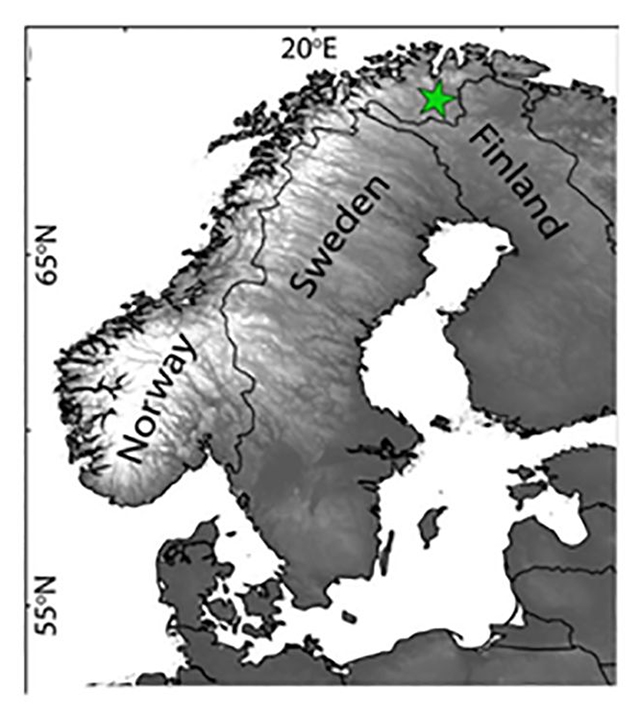ARTICLE AD
A simple blue stain could force trees into giving up their memories of cold summers and volcanic winters, a recent study reveals, giving researchers a new way to precisely reconstruct ancient climates using the antomy of timber.
Combining the biological stains safranin and astra blue can reveal a lack of lignin in wood, a compound that strengthens and protects plant walls. When trees and shrubs are colder and aren't growing properly, lignification can be impacted.
The new study, from an international team of researchers, suggests the blue rings resulting from the staining of ligin-deficient material can be reliable climate history indicators, providing a look back across past centuries to identify variations in growing conditions.
 Samples were collected from from Mount Iškoras in the northernmost part of Norway. (Buchwal et al., Frontiers in Plant Science, 2025)
Samples were collected from from Mount Iškoras in the northernmost part of Norway. (Buchwal et al., Frontiers in Plant Science, 2025)To analyze this relationship further, the team took samples from 25 Scots pine trees (Pinus sylvestris) and 54 common juniper shrubs (Juniperus communis) from the Mount Iškoras region in northern Norway, right at the limit of the northern treeline.
Applying the dye safranin to the samples stains cells a bright pink. when the wood sample is then stained with astra blue, cell walls lacking sufficient lignin lose their pink color and darken, leaving clearly defined rings.
"Blue rings look like unfinished growth rings, and are associated with cold conditions during the growing season," says Agata Buchwal, an dendroecologist from Adam Mickiewicz University in Poland.
"In general, we found more blue rings in trees than in shrubs. Shrubs seem to be more adapted to cooling events than trees, which is probably why shrubs are found further north."
A little more than 2 percent of the pine tree rings and 1 percent of the juniper shrub rings turned blue, suggesting the pine trees are more sensitive to the cold, less resilient, and better climate indicators.
There were significant drops in lignin production in 1902 (with blue rings occurring in 96 percent of pine tree rings and 68 percent of juniper shrub rings) and 1877 (where blue rings occurred in 85 percent of pine rings and 36 percent of juniper rings), which the researchers think are linked to cold summers – and possibly distant volcanic eruptions – from those years.
"Summer temperature conditions in 1902 and 1877 were particularly unfavorable for the growth of woody plants," write the researchers in their published paper.
"However, future studies should also verify if the occurrence of blue rings is not driven or co-driven by a lack of moisture or other non-climatic factors."
It's only recently that scientists have started studying blue rings, and there remains a lot of uncertainty about how they vary between plant species and between different areas, and how closely they can be linked to cooler temperatures.
The data collected here brings some fresh clarity to the field, and suggests that multi-colored rings can be used as evidence of shifts in growing periods, seasonal temperatures, and even global climatic events.
"We hope to inspire other research groups to look for the blue rings in their material," says Buchwal. "It would be great to establish a blue ring network based on trees and shrubs to reconstruct cooling events at the northern treeline over long timescales."
The research has been published in Frontiers in Plant Science.

 2 hours ago
1
2 hours ago
1 

